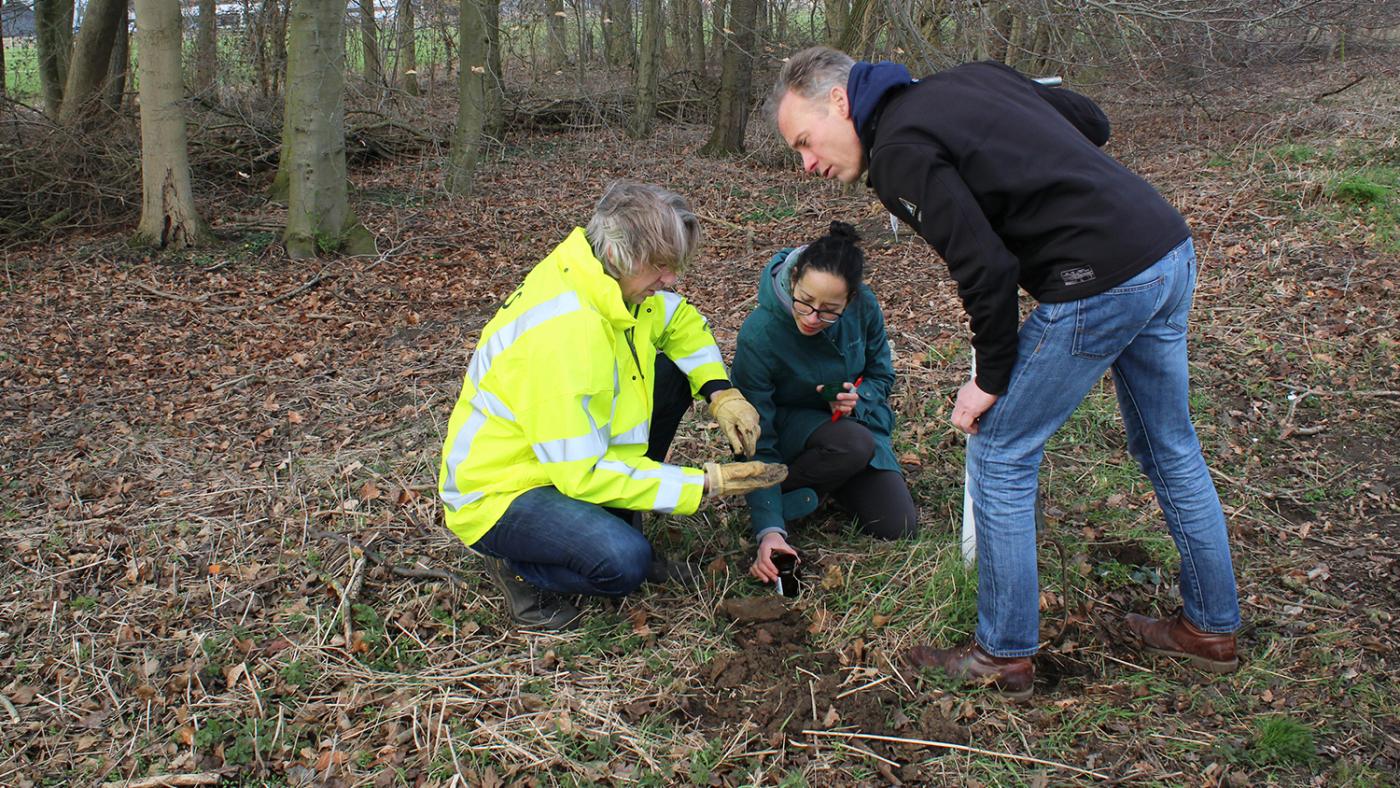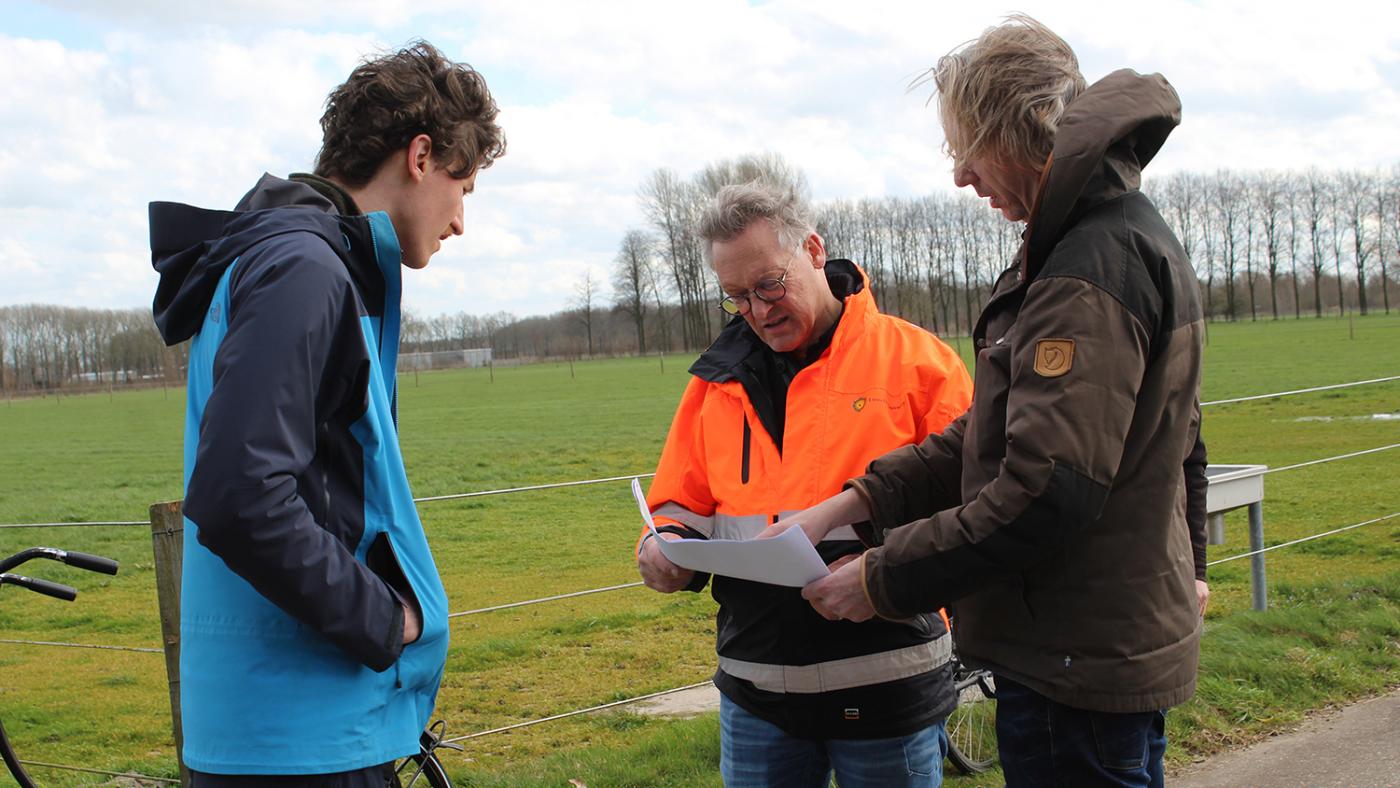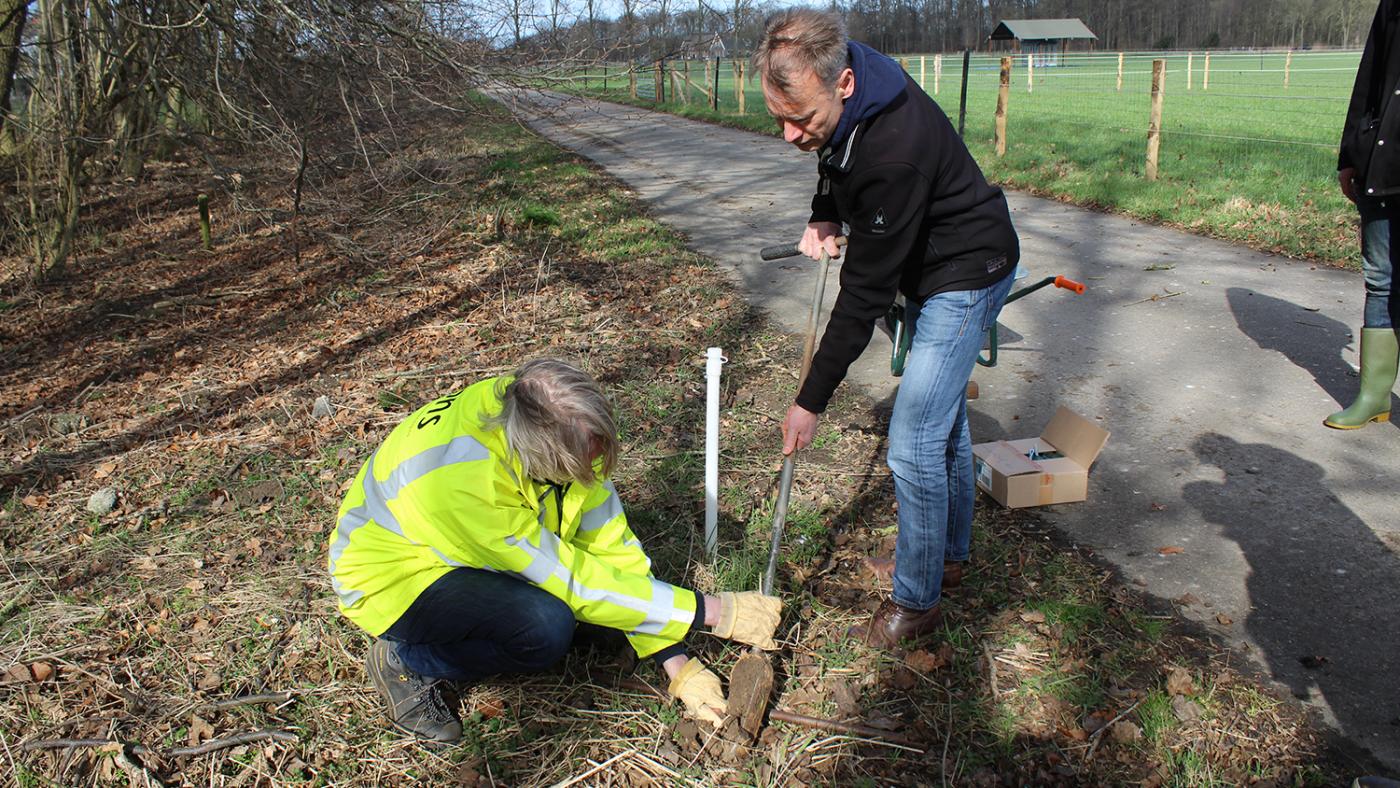Quest for alternative remediation
PFAS field at Utrecht Science Park becomes a living lab

A few years ago, horses still walked on the field overlooking Tolakkerlaan. A small shelter under which food was stored recalls those days. But last year, the horses were removed from the field. This was because for several years it had been found to be contaminated with Pfas, a collection of chemicals that can have a negative effect on the environment and health.
Project leader Frank Kooiman of the Facility Service Centre unfolds a map of the area showing with red, orange and green dots exactly where the concentration of the poison is highest. Moments later, a car pulls over with Johan van Leeuwen, hydrogeologist at Geosciences, in it. He takes a wheelbarrow with an auger and sample pots out of the trunk. Alongside them, George Kowalchuk, professor of Ecology & Biodiversity, and Chiel Jonker, environmental chemist and toxicologist at the IRAS interfaculty research institute, cycle by.
Sustainable remediation
Until 2014, the field was the site of fire drills held by the UU’s Emergency Response Team. The equipment used in those exercises was found to have been full of Pfas. At first, the university still thought that consequences of the contamination would not be too bad, but after a thorough reading of the research report prepared by the municipality in 2021, it turned out that prolonged contact could lead to health damage to humans and animals. Contact had been made with Veterinary Medicine by then after which the faculty removed the horses from the field.
The university was preparing for a major clean-up in which 2,200 cubic metres of soil would be excavated and replaced with new, clean soil. This was supposed to happen last summer. “We had already stored a fair amount of clean soil”, Kooiman says.
But then he heard from someone at the municipality about alternative ways of remediation. In Belgium, an example of sustainable remediation was using Phytoremediation, which is literally called ‘plants restore the balance’. The idea is that plants are placed in the poisoned soil and fix contaminants in the roots, stems and leaves. In some cases, contaminated parts of the plants are harvested, removed and destroyed. Plants can attract bacteria in the roots, reducing or fixing toxins in the soil.
“Couldn’t this method also work on this field?”, he wondered. He contacted the Green Office. There, Living Lab Coordinator Tom McDeVitt set to work to see who within Utrecht University could be the specialists in this field.

Expertise within the university
It turned out that UU did indeed have experts in the field of alternative remediation. Johan van Leeuwen, for example. For his PhD, he researched how to monitor and package toxins using bacteria. George Kowalchuk’s research group also has experience in this field. Among other things, his group researches biodiversity of poisoned soil. Which plants or animals feel at home in this environment and can play a role in making the soil cleaner. Chiel Jonker has also been a specialist for years in analysing risks of remediating poisoned soil and how to do it.
At the same time as the Green Office’s search, Jonker and Van Leeuwen had already been in mutual contact remediating Pfas within the university. “We wondered whether such a clean-up operation where soil is moved is the right way. If you deliver that soil elsewhere, although it is a solution for UU, you are taking the mess elsewhere. And how do you prevent poison getting back into the groundwater there? We already talked about possible alternatives and found our way to FSC and Green Office.”

Fieldwork in UU’s backyard
Now here they are on the contaminated field. Van Leeuwen makes his way to the left side of the road, the spot where there used to be a cabinet with extinguishing equipment. Those extinguishers must have leaked judging by the concentration of red dots on the map. Using an auger, samples are taken from the earth and put into sample jars. “With these, we can determine the current value at different depths. So then later you can see what the effect of our measures has been,” Van Leeuwen said. “I do think we need to measure in several places. We cannot assume with certainty that the values here are the most toxic.”
A living lab is thus being launched. Scientists from different disciplines will work together to try to remediate a contaminated field in an alternative way. Fieldwork in the backyard of the Utrecht Science Park. One drawback of this method is that real remediation is still some time away. The researchers will analyse the samples and scrutinise the biodiversity of the field. From those analyses, they hope to develop models that can help devise a solution. “You start very small and see how you can scale up the work little by little”, Van Leeuwen explains.
Student input
The Utrecht municipality has given the university two years to use the field as a living lab instead of direct remediation. That period can be extended. The idea is to involve students in the project as well. Van Leeuwen: “We have come up with projects for master students to do research on this field. They will make a visible contribution to analysis and modelling. In addition, it will have a place in undergraduate education.”
Van Leeuwen hopes this project can make a social contribution to the question of how to remediate poisoned soil in a neutral and natural way. “And hopefully it will also result in a publication.”